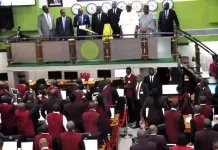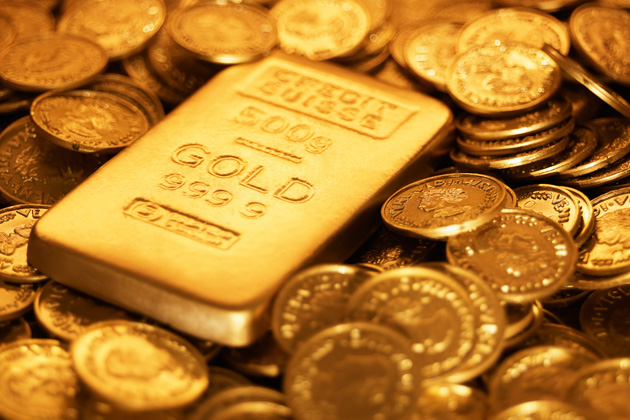Gold prices hit a four-month peak on Monday, January 15, as the U.S. dollar index slumped to its lowest in
three years but analysts said the greenback’s slide could be short-lived as it was not driven by fundamentals.
Spot gold was up 0.2 percent at $1,341.92 an ounce by 1238 GMT after touching its strongest since Sept. 8 at
$1,344.44. The precious metal rose for a fifth straight week last week, gaining 1.4 percent.
U.S. gold futures were up 0.6 percent at $1,343.20 an ounce.
“The weakness in the dollar is not justified by fundamentals. It’s a little bit weird considering the divergence
in monetary policy should play in favour of a stronger dollar,” Capital Economics analyst Simona Gambarini said.
She said the U.S. Federal Reserve was widely expected to raise interest rates, which would favour a stronger dollar, while the European Central Bank should keep rates on hold.
The dollar index was down 0.5 percent at 90.516, having reached its weakest since January 2015 at 90.421.
A weaker U.S. currency makes dollar-denominated assets such as gold cheaper for holders of other currencies, while higher rates could dent demand for non-interest-paying gold.
“The main reason for the tight relationship between the dollar and gold is a lack of physical demand on the gold side in terms of ETFs (exchange-traded funds) and Indian and Chinese jewellery,” said Carsten Menke, a Julius Baer commodity analyst.
Adding a touch of bullishness to gold was data from the U.S. Commodity Futures Trading Commission on Friday, which showed hedge funds and money managers raised their net long positions in COMEX gold and silver in the week to Jan. 9.
Palladium rose 0.5 percent to $1,128.50 on Monday, after hitting a record high of $1,138.
The metal has seen a sustained rally from high demand in the auto industry amid a supply deficit, analysts said.
Spot silver rose 0.3 percent to $17.31 an ounce, after touching a near three-month high at $17.42. Platinum was up 0.4 percent at $997.20, after touching its highest since Sept. 11 at $1,001.40.














